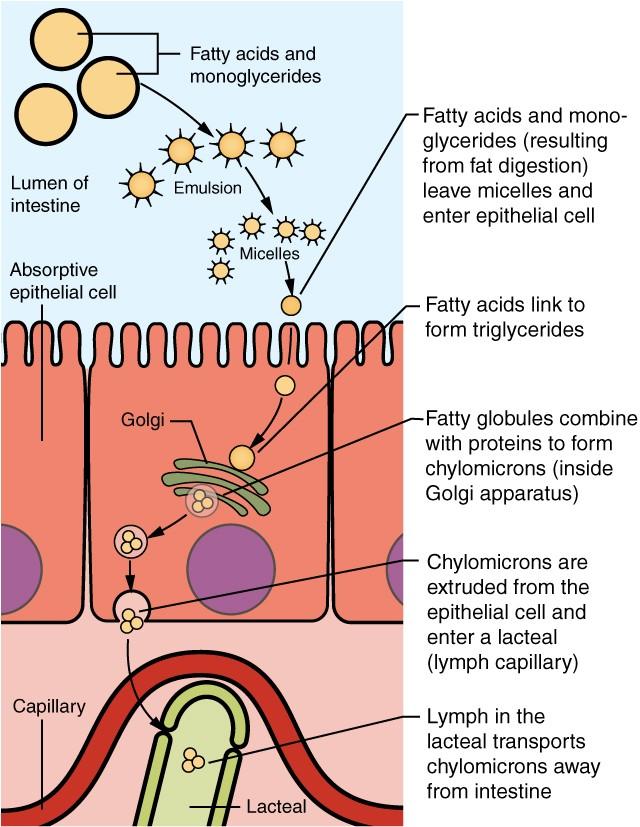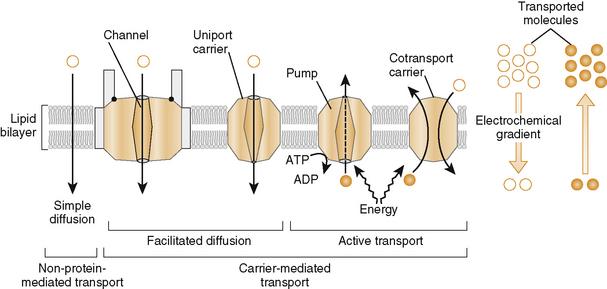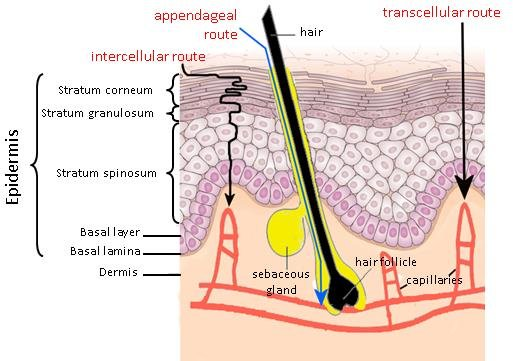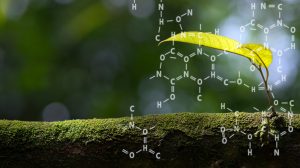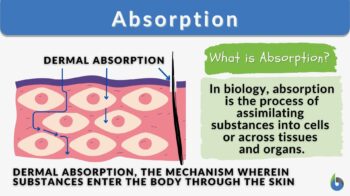
Absorption
n., plural: absorptionS
[æbˈsɔɹp.ʃn̩]
Definition: The act or process of absorbing
Table of Contents
Absorption can be defined as the process of assimilating substances across the intestinal epithelial cells or the tissues and organs through the process of active or passive transport. This can be facilitated through diffusion or osmosis and always follows the digestion process and never precedes it.
Have you ever wondered how the body uses the food that we consume? The variety of macromolecules and micromolecules in our plates has to be reconstituted before it acquires that final and usable shape that the human body needs. Digestion is thus a very important topic in human physiology! But is digesting the food in the digestive system enough????
No, what follows next is absorption and one of the most crucial steps in the acquisition of energy for the body. Without proper absorption of the reconstituted substrate molecules, digestion may be futile in the human body. This underpins the importance of absorption (also called the assimilation process).
In this article, we will deal with the integral steps and ideas about absorption. Read on to learn more about such exciting facts surrounding absorption!
Absorption Definition
Absorption is a physiological mechanism by which simpler forms of molecules (both macromolecules and micromolecules) are transmitted (absorbed/assimilated) from the intestinal lumen to the circulatory system (blood or lymphatic). This process occurs across the mucosa of the intestine via the epithelial cells’ barrier that constitutes it.

Some of the most important ideas that revolve around absorption are:
- Nutritional energy isn’t derived from polymers, but rather monomers which highlights the importance of the digestion process.

Figure 2: Complex carbohydrates can’t be directly absorbed in the small intestines. They are first broken down into monosaccharides followed by absorption. Image Credit: Texas Gateway - The digestion process always precedes the absorption process, especially when the food material consists of polymers. (In the case of glucose, which is already a monomer, glucose can be readily absorbed through the oral tissues. ).
- The final usable and absorbable form of fuel is in the form of either monomers or reconstituted polymers (like chylomicrons). Polymers as such are not absorbable by the human body.

Figure 3: lipids undergo digestion and reassembly in intestinal epithelial cells, forming triglycerides. These triglycerides are “packaged into chylomicrons”, enabling their transport through the lymphatic system for delivery to tissues throughout the body. Image Credit: Lumen Learning - The most important site of absorption in the human system is the small intestine.
- The plasma membrane of epithelial cells of the small intestine is bestowed with the specific function of absorption.
- Mechanisms by which absorption takes place through this plasma membrane are:
- Simple passive diffusion
- Facilitated diffusion (carrier-mediated)
- Active transport (requiring ATPs)
- Pinocytosis

Figure 4: Different mechanisms used in the absorption of different molecules. Image Credit: Basicmedical key:
- In Biology, the process of absorption can occur across:
- Across the tissues
- Across organs
- Dermal absorption is the process by which absorption manifests through the skin. This is a way through which substances can enter the body (dermal route). Dermal absorption may also be used as a route of administration for certain medications.

Figure 5: Different routes of dermal absorption are described namely intercellular, appendageal, and transcellular. Image Credit: Harrie Buist
- Intestinal absorption is a vital physiological process that involves the uptake of nutrients and substances from the small intestine into the bloodstream. The inner lining of the small intestine composed of 3 structures (jump to this section) greatly enhances the surface area available for absorption. Through enzymatic breakdown, carbohydrates, proteins, and fats transport nutrients across the intestinal epithelium and into the blood. Additionally, water, electrolytes, and specific medications can also be absorbed. Malabsorption (poor absorption) disorders can disrupt this process and impact overall health. Different factors influencing the efficiency of absorption are:
- Surface area
- Concentration gradients
- Specialized transporters
- Physics definition: The term absorption is also used in other related disciplines like Physics where absorption refers to the act or process of retaining light energy without reflection or transmission upon passing through a medium, as in the absorption of light by atoms. It can also refer to the absorption of sound waves by a material.
- Chemistry definition: In chemistry, absorption pertains to the process in which a substance permeates another, as in a liquid permeating, or absorbed by, a solid.
Watch this vid about absorption in the digestive system:
Biology definition:
Absorption is the process of absorbing or assimilating substances into cells or across tissues and organs. It often employs biological transport mechanisms, such as diffusion and osmosis. In biology, absorption is exemplified by the absorption of nutrients by the digestive system, the absorption of drugs into the bloodstream, and absorption through the skin (referred to as dermal absorption).
What Is Absorption In Biology Example?
There are several examples of absorption in biology. Some of the most important molecules (monomers) that are absorbed by different mechanisms are compiled in the table below.
Table 1: Different mechanisms of molecule/substrate absorption. | |
|---|---|
| Molecule/Substrate for absorption | Nature of mechanism for transportation |
| Glucose/Galactose | Active transport |
| Conjugated bile acids (ileum) | |
| Sulfate (ileum) | |
| Neutral Amino Acids | |
| Imino Acids | |
| Dipeptides and Tripeptides | |
| Myo-inositol | |
| Carnitine | |
| Calcium | |
| Iron | |
| Folic Acid | |
| Ascorbic Acid | |
| Biotin | |
| Thiamine | |
| Nicotinamide | |
| Choline | Facilitated diffusion |
| Vitamin-B12-IF complex (ileum) | |
| Fructose | |
| Riboflavin | |
Data Source: Dr. Harpreet Narang of Biology Online
Related Terms
- Absorption band: An absorption band is defined as a distinct region in the electromagnetic spectrum where a substance specifically absorbs a “given wavelength” of light due to its specific interactions with its atoms/molecules. The study and interpretation of absorption bands play a crucial role in various spectroscopic techniques like UV-Visible spectroscopy and infrared spectroscopy, thereby enabling scientists to analyze and understand different aspects of a material like its composition, structure, and properties.
- Absorption cell: An absorption cell is a vital component in spectroscopy for “quantifying the absorption of electromagnetic radiation” by a given sample. It comprises a transparent vessel containing the sample which facilitates the transmission of incident light. The absorption cell design ensures precise control over the light’s path length within the sample, thereby enabling accurate measurements. It is crucial to construct the cell using materials that do not introduce interference, thereby maintaining the integrity of the absorption process.
- Atomic absorption spectrophotometry: Atomic absorption spectrophotometry (AAS) is a widely used analytical technique for determining the concentration of specific elements in a given sample. It operates on the principle of absorption spectroscopy, where atoms selectively absorb light at characteristic wavelengths. A typical AAS instrument consists of a “nebulizer” for sample atomization, a “light source” emitting element-specific wavelengths, a “monochromator” for wavelength selection, a “sample cell” to contain the solution and a “detector” for measuring the intensity of transmitted light. AAS offers exceptional sensitivity, selectivity, and accuracy, making it a valuable tool in diverse fields such as environmental monitoring and pharmaceutical analysis.
- Cutaneous absorption: Cutaneous absorption refers to the process by which substances are “absorbed through the skin” into the bloodstream. This route of absorption is important for topical medications, cosmetics, and exposure to environmental substances. Factors such as skin integrity, molecular size, lipophilicity, and formulation influence the efficiency and extent of cutaneous absorption.
- Carbon dioxide absorption: Carbon dioxide (CO2) absorption refers to the process of capturing and removing carbon dioxide gas from the atmosphere or a gas mixture. This absorption can occur through various methods and technologies, including chemical absorption, physical absorption, and biological processes. Plants play an integral role in absorbing carbon dioxide from the atmosphere and fixing it in the form of organic carbon, thus also aiding the transmission of CO2 from the atmosphere to the biosphere (into the food chain).
NOTE IT!
“The Science Underlying Maximization of Intestinal Absorption”
While food mostly comes in the form of polymers, it’s their monomeric form in the digested food that is finally absorbable by the body. Small intestines are the site where maximum absorption of all monomeric forms majorly takes place in the body.
But do you know how small intestines can do that? Is there something peculiarly different in this part of the body that is endowed with this specific role of nutrient absorption??
The answer to this is a BIG YES!
Contrary to common belief, small intestines are highly modified cylindrical tubes. While the simple cylinders have a restricted surface area, the presence of Kerckring’s Folds along with the villi and microvilli helps in the provision of a 600-fold surface area in the small intestines as compared to a simple cylinder tube of the same length.
The contributions of these three different micro-structures in the small intestines vary:
- Kerckring’s Folds: 3-fold
- Villi:10-fold
- Microvilli: 20-fold
Not only do these structures maximize the absorptive surface area of the intestinal epithelium but they also contribute tremendously to the efficient absorption process.

Take the Absorption – Biology Quiz!
Further Reading
References
- Caspary, W. F. (1992). Physiology and pathophysiology of intestinal absorption. The American Journal of clinical nutrition, 55(1), 299S-308S.
- Kiela, P. R., & Ghishan, F. K. (2016). Physiology of intestinal absorption and secretion. Best practice & research Clinical gastroenterology, 30(2), 145-159.
- Verzár, F., & McDougall, E. J. (1936). Absorption from the intestine. Absorption from the intestine.
- Lv, H., Yang, Z., Pan, H., & Wu, R. (2022). Electromagnetic absorption materials: Current progress and new frontiers. Progress in Materials Science, 127, 100946.
- Martini, A., & Borfecchia, E. (2020). Spectral decomposition of x-ray absorption spectroscopy datasets: Methods and applications. Crystals, 10(8), 664.
- Pawłowski, L., Pawłowska, M., Cel, W., Wang, L., Li, C., & Mei, T. (2019). Characteristic of carbon dioxide absorption by cereals in Poland and China. gospodarka surowcami mineralnymi, 35.
- Rodrigo, L. (2022). Introductory Chapter: Structure and Functions of the Small Intestine. In Immunology of the GI Tract-Recent Advances. IntechOpen.
©BiologyOnline.com. Content provided and moderated by Biology Online Editors.

